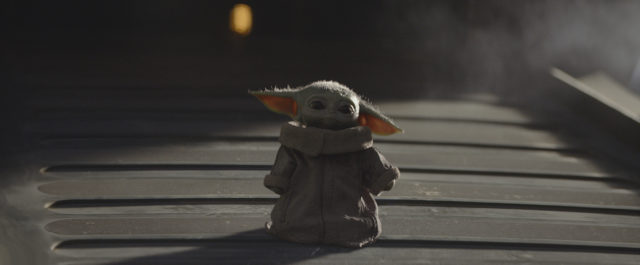Baby Yoda is not the only thing that makes “The Mandalorian” a memorable addition to the “Star Wars” franchise.
With its wide appeal to hardcore and new “Star Wars” fans alike since launching on Disney+ last November, it is no surprise that the first live-action “Star Wars” series is a contender for a total of 15 Emmys, including outstanding drama series and categories in cinematography, special effects and costumes. However, what makes the series different is not so much its eye-catching wardrobe or groundbreaking special effects, but rather how it distinguishes itself from other “Star Wars” content.
For starters, the show does not fit into the pattern of the established canon so viewers do not associate it with past “Star Wars” stories. From a temporal perspective, “The Mandalorian” takes place five years after 1983’s “Star Wars: Return of The Jedi” and nearly three decades before 2015’s “Star Wars: The Force Awakens,” at which point the Galactic Empire is no more and the New Republic is the main authority in the galaxy.
Previous “Star Wars” feature films and television shows – including “Star Wars: The Clone Wars” and “Star Wars Rebels” – focus on the characters’ journeys against the backdrop of galactic conflict and established characters. In contrast, “The Mandalorian” takes a leap in “Star Wars” storytelling by following Din Djarin – the show’s titular character portrayed by Pedro Pascal – on his bounty-hunting-turned-guardian mission during an unexplored time period in the franchise.
[Related: UCLA alum, fellow editing team examine choices and process behind ‘Mrs. America’]
Djarin keeps to himself and away from the central government and well-known characters during the first season, which makes for a lot of potential to explore a character-centric story.
Although there are no familiar faces, “The Mandalorian” stands as its own story with new characters, which is what makes it such a successful expansion to the franchise.
But that is not to say other “Star Wars” content lacks aspects of character-focused narratives. A prime example is Luke Skywalker’s hero’s journey throughout the original trilogy. And as for televised shows, the seven seasons of “Star Wars: The Clone Wars” mainly follow Ahsoka Tano – apprentice to Anakin Skywalker – and her arc amid a major galactic war.
However, unlike Skywalker or Tano, Djarin’s character is truly a mystery. Whereas the former characters are force users and have ties to the main powers in the galaxy, Djarin has no special abilities and is part of a faction that operates independently, further cementing his anonymity is that he is a Foundling – individuals who are adopted into the Mandalorian way of life. His backstory reveals that Mandalorian is a creed, not a race.
Besides Baby Yoda – canonically known as The Child – and Djarin, the main characters in the show also include ex-Rebel shock trooper Cara Dune, Greef Karga who is leader of the Bounty Hunters Guild and Kuiil of the Ugnaught species who worked his way out of indentured servitude to the Empire. None of the names in this motley crew ring a bell, but viewers can grasp onto the familiar factions they are from: the Rebel Alliance, the Empire and bounty hunters. In this way, “The Mandalorian” is still grounded in the universe fans have always known.
[Related: Crew, cast behind ‘BoJack Horseman’ discuss their individual impacts on the show]
Along those lines, Mandalorians are no strangers to hardcore fans despite the show’s novel storytelling and characters. These warriors have always been a topic of interest since the appearance of Boba Fett and are often seen in “Star Wars: The Clone Wars” and “Star Wars Rebels.”
Likewise, “The Mandalorian” has several easter eggs and callbacks to other “Star Wars” canon such as the the Siege of Mandalore and the Great Purge, as well as the Darksaber seen in the first season’s finale.
While the show stands on its own and appeals to new fans not familiar with the greater “Star Wars” universe, it is also a melting pot of lore for those who have kept up with the movies and TV series. The series satisfies a range of viewers while pioneering uncharted territory and still acknowledging the content that came before it.
So as Baby Yoda launches a new era of memes, “The Mandalorian” distinctively opens up a new chapter in “Star Wars,” exemplifying how the franchise can continue pushing boundaries not only within its universe, but with storytelling in general.

